Understanding Master Kush Cannabis
Master Kush is celebrated for its strong, earthy aroma and relaxing effects. Originating from the Hindu Kush region, it has been crossbred to enhance its potency and yield. Master Kush plants typically grow to a medium height, making them suitable for both indoor and outdoor cultivation.
Benefits of Growing Master Kush
- High THC Content: Master Kush is known for its high THC levels, often ranging between 18-24%, providing powerful and long-lasting effects.
- Resilient and Hardy: This strain is resistant to mold and pests, making it an excellent choice for less experienced growers.
- Compact Growth: Master Kush's medium height and bushy structure are ideal for indoor grows and small outdoor spaces.
- High Yield: With proper care, Master Kush can produce substantial yields of dense, resinous buds.
Germinating Master Kush Seeds
Germinating Master Kush seeds is the first step in your growing journey. Follow these steps to ensure successful germination:
- Paper Towel Method: Place your seeds between moist paper towels and keep them in a warm, dark place. Check daily to ensure the towels stay moist. Seeds typically sprout within 3-7 days.
- Direct Planting: Alternatively, you can plant the seeds directly into your growing medium. Ensure the soil is moist but not waterlogged and maintain a temperature around 70-80F (21-27C).
- Rooting Medium: For more controlled environments, use seedling plugs or cubes. These provide optimal moisture and aeration for the developing roots.
Feeding and Watering Your Master Kush Plants
Proper nutrition and watering are essential for robust growth and high yields. Here's how to feed and water your Master Kush plants:
Feeding
Master Kush plants benefit from a balanced diet throughout their lifecycle. Follow these guidelines:
- Vegetative Stage: Use a nutrient solution high in nitrogen to promote leafy growth. Look for fertilizers with an N-P-K ratio around 3-1-2.
- Flowering Stage: Switch to a solution higher in phosphorus and potassium to support bud development. Aim for an N-P-K ratio around 1-3-2.
- Feeding Schedule: Start with nutrients at half strength and gradually increase if needed. Feed your plants every other watering to avoid nutrient burn.
- Organic Options: Consider using organic fertilizers like compost tea, fish emulsion, or kelp meal for a more natural approach.
Watering
Proper watering practices are crucial for healthy growth. Follow these tips:
- Frequency: Water when the top inch of soil is dry. Overwatering can lead to root rot, so it's better to underwater slightly than to overwater.
- Water Quality: Use filtered or dechlorinated water to prevent chemical build-up in the soil. Maintain a pH level of 6.0-7.0 for soil and 5.5-6.5 for hydroponics.
- Deep Watering: Ensure thorough watering to encourage deep root development. Allow excess water to drain to prevent soggy soil.
Setting Up Your Growing Environment
Creating the right environment is crucial for the healthy growth of Master Kush plants. Here's how to set up your indoor or outdoor growing space:
Indoor Growing
Master Kush thrives in controlled indoor environments. Consider these factors:
- Lighting: Use full-spectrum LED lights to simulate natural sunlight. Master Kush benefits from 18-20 hours of light per day during the vegetative stage and 12 hours during flowering.
- Temperature and Humidity: Maintain temperatures between 70-85F (21-29C) during the day and 65-75F (18-24C) at night. Keep humidity levels at 40-60% during vegetative growth, reducing to 30-40% during flowering to prevent mold.
- Ventilation: Ensure good air circulation with oscillating fans and an exhaust system to remove stale air and excess humidity.
- Growing Medium: Choose a high-quality soil mix with good drainage or consider hydroponic systems for faster growth and higher yields.
- Containers: Use pots that allow for adequate root development. Fabric pots or containers with drainage holes are ideal to prevent waterlogging.
Outdoor Growing
Master Kush can also flourish outdoors with proper care. Here's how to optimize your outdoor grow:
- Sunlight: Position your plants to receive at least 6-8 hours of direct sunlight daily. Master Kush thrives in sunny, warm climates.
- Soil Quality: Use nutrient-rich, well-draining soil. Adding compost or organic matter can enhance soil fertility.
- Watering: Water deeply but infrequently to encourage deep root growth. Allow the soil to dry slightly between watering sessions to prevent root rot.
- Pest Control: Regularly inspect your plants for pests and use organic pest control methods, such as neem oil or insecticidal soap, to keep them at bay.
- Climate Considerations: Plant during the late spring to early summer in cooler climates to take advantage of the warm weather. In warmer regions, consider providing some shade during the hottest parts of the day.
Training Techniques for Master Kush
Training your Master Kush plants can help maximize light exposure and improve yields. Here are some effective techniques:
Low-Stress Training (LST)
LST involves gently bending and tying down branches to create an even canopy. This technique improves light penetration and promotes the growth of multiple colas. Use soft plant ties or garden wire to secure the branches without causing damage.
High-Stress Training (HST)
HST techniques, such as topping or fimming, involve cutting parts of the plant to redirect growth and encourage a bushier structure. These methods can increase yields but should be done with caution and only during the vegetative stage to allow recovery before flowering.
ScrOG (Screen of Green)
The ScrOG technique involves using a screen or netting to spread out the branches of the plant horizontally. As Master Kush grows, its branches are woven through the screen to create a flat canopy. This method maximizes light exposure and encourages the development of multiple bud sites. Place the screen about 8-12 inches above the growing medium and gently guide the branches through the net as they grow.
Pest and Disease Management
Maintaining a healthy growing environment is crucial to prevent pests and diseases from affecting your Master Kush plants. Here's how to manage common issues:
- Aphids and Spider Mites: These pests can weaken plants by sucking sap from the leaves. Regularly inspect your plants and use organic insecticides, such as neem oil or insecticidal soap, to control infestations. Introducing beneficial insects like ladybugs can also help keep these pests at bay.
- Powdery Mildew: This fungal disease appears as a white, powdery coating on leaves and can thrive in humid conditions. To prevent mildew, maintain lower humidity levels and ensure good air circulation. If mildew appears, remove affected leaves and treat the plants with a fungicide or a mixture of water and baking soda.
- Root Rot: Overwatering and poor drainage can lead to root rot, which severely affects plant health. Use well-draining soil and containers with adequate drainage. Allow the soil to dry out between waterings and avoid overwatering. If root rot occurs, trim away the affected roots and replant in fresh, dry soil.
- Bud Rot (Botrytis): Bud rot is a gray mold that can devastate flowering plants, especially in humid conditions. Prevent it by keeping humidity low during the flowering stage and ensuring good airflow around the buds. Remove any affected buds immediately to prevent the spread.
Harvesting and Curing Master Kush
Harvesting Master Kush at the right time and curing it properly are key to maximizing potency and flavor. Here's how to do it:
Determining Harvest Time
Master Kush is ready for harvest when most of the trichomes (the tiny, crystal-like structures on the buds) have turned milky white, with some turning amber. This usually occurs 8-10 weeks into the flowering stage. Use a magnifying glass or microscope to closely inspect the trichomes for the best harvest timing.
Harvesting Process
To harvest, cut the main stem at the base of the plant. Trim away the large fan leaves, but leave the smaller leaves around the buds for the initial drying phase. Hang the branches upside down in a dark, well-ventilated space with temperatures around 60-70F (15-21C) and humidity at 50-60%. Allow the buds to dry for 7-10 days until they feel dry to the touch.
Curing
Once the buds are dry, place them in airtight glass jars. Open the jars daily for the first week to release excess moisture and prevent mold. After the first week, open the jars less frequently, continuing the curing process for 2-4 weeks. Proper curing enhances the flavor, aroma, and potency of your Master Kush buds and can significantly improve the overall quality.

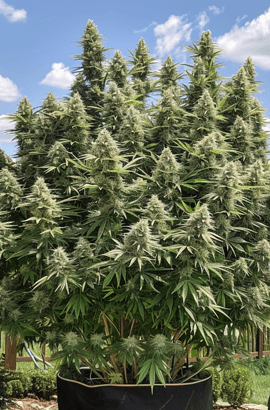
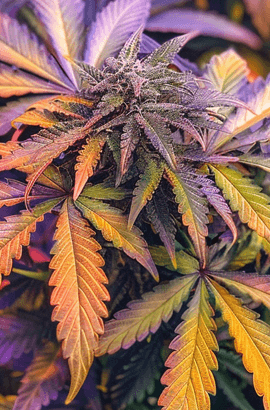
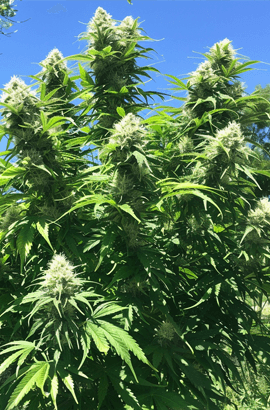


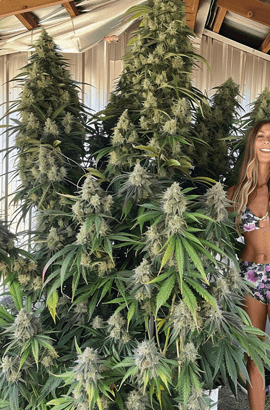

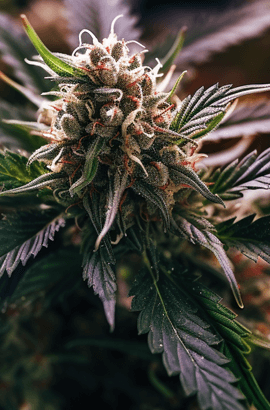

Add Your Comments